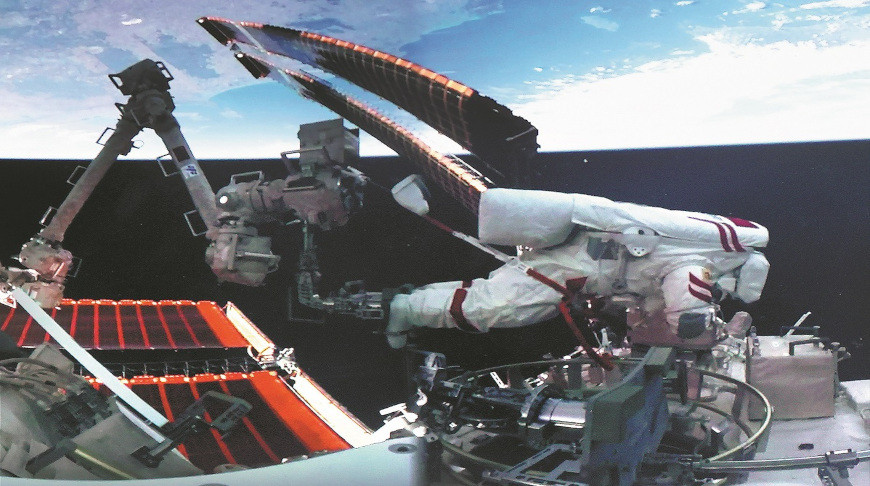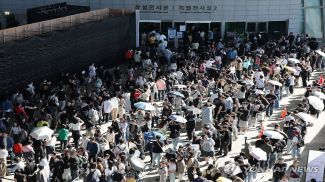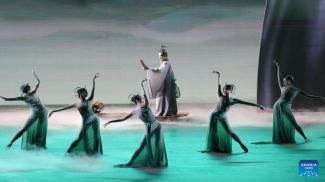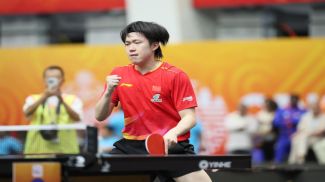
BEIJING, 29 May (BelTA - China Daily) - The Shenzhou XVIII astronauts
conducted their first spacewalk outside the Tiangong space station on
Tuesday, completing several assignments, according to the China Manned
Space Agency.
Mission commander Senior Colonel Ye Guangfu and crew member Lieutenant Colonel Li Guangsu returned to the Wentian science module at 6:58 pm after floating outside the colossal orbital station for nearly eight-and-a-half hours, the agency said in a news release. The third crew member, Lieutenant Colonel Li Cong, stayed inside Tiangong to provide support, it said.
With cooperation and assistance from ground controllers and the space station's robotic arm, the team completed all its assigned tasks, including installing space debris shields and checking the condition of extravehicular equipment, the agency said.
This was the 16th spacewalk carried out by Chinese astronauts, and also marked the second spacewalk by Ye and the first by Li Guangsu.
The Shenzhou XVIII astronauts — the seventh group of inhabitants of the Chinese space station — were launched on April 25 by a Long March 2F carrier rocket from the Jiuquan Satellite Launch Center in northwestern China. They arrived at the Tiangong space station the next morning to take over from their Shenzhou XVII peers.
As a member of the country's second generation of astronauts, Ye was part of the Shenzhou XIII mission, which took place from October 2021 to April 2022, and made his first spacewalk during the six-month flight.
The Shenzhou XVIII is the first spaceflight for Li Cong and Li Guangsu, both of whom belong to China's third generation of astronauts. The three astronauts are scheduled to work onboard Tiangong until late October and then hand over the orbital outpost to the Shenzhou XIX crew.
As of Tuesday, Ye and his team have stayed in space for 33 days and fulfilled a host of tasks such as equipment maintenance, examinations and tests on spacewalk suits, emergency response exercises and medical aid drills.
They also engaged in an array of space science experiments and mounted the second set of material exposure experimental apparatus, the agency said.
Over the remaining period of their stay, the astronauts will carry out many scientific experiments and technological tests, and will conduct multiple spacewalks and payload deployment operations, it added.
Mission commander Senior Colonel Ye Guangfu and crew member Lieutenant Colonel Li Guangsu returned to the Wentian science module at 6:58 pm after floating outside the colossal orbital station for nearly eight-and-a-half hours, the agency said in a news release. The third crew member, Lieutenant Colonel Li Cong, stayed inside Tiangong to provide support, it said.
With cooperation and assistance from ground controllers and the space station's robotic arm, the team completed all its assigned tasks, including installing space debris shields and checking the condition of extravehicular equipment, the agency said.
This was the 16th spacewalk carried out by Chinese astronauts, and also marked the second spacewalk by Ye and the first by Li Guangsu.
The Shenzhou XVIII astronauts — the seventh group of inhabitants of the Chinese space station — were launched on April 25 by a Long March 2F carrier rocket from the Jiuquan Satellite Launch Center in northwestern China. They arrived at the Tiangong space station the next morning to take over from their Shenzhou XVII peers.
As a member of the country's second generation of astronauts, Ye was part of the Shenzhou XIII mission, which took place from October 2021 to April 2022, and made his first spacewalk during the six-month flight.
The Shenzhou XVIII is the first spaceflight for Li Cong and Li Guangsu, both of whom belong to China's third generation of astronauts. The three astronauts are scheduled to work onboard Tiangong until late October and then hand over the orbital outpost to the Shenzhou XIX crew.
As of Tuesday, Ye and his team have stayed in space for 33 days and fulfilled a host of tasks such as equipment maintenance, examinations and tests on spacewalk suits, emergency response exercises and medical aid drills.
They also engaged in an array of space science experiments and mounted the second set of material exposure experimental apparatus, the agency said.
Over the remaining period of their stay, the astronauts will carry out many scientific experiments and technological tests, and will conduct multiple spacewalks and payload deployment operations, it added.













